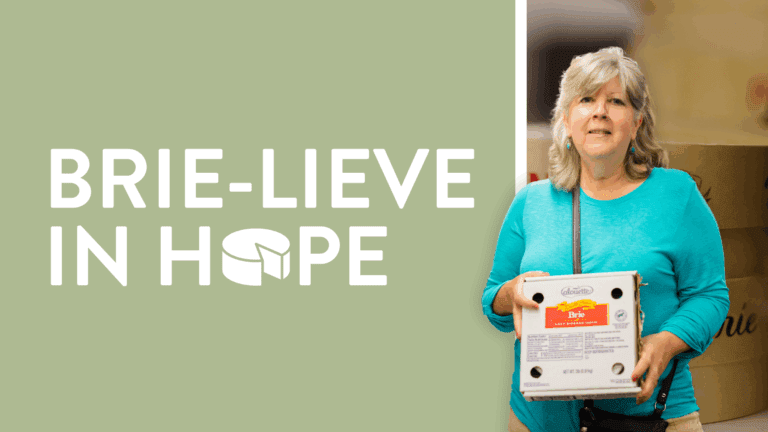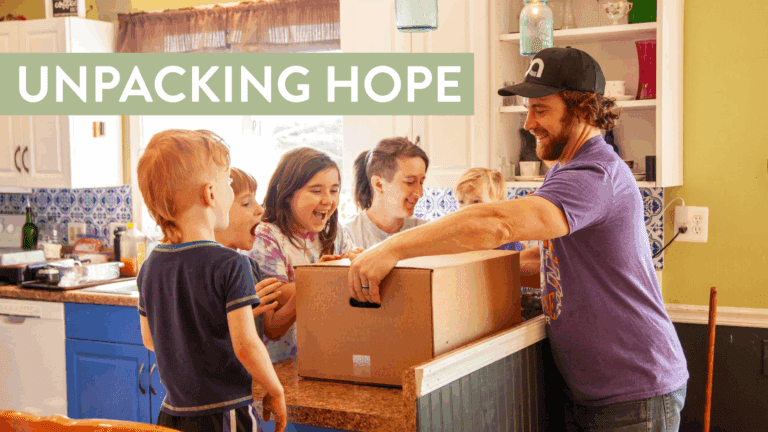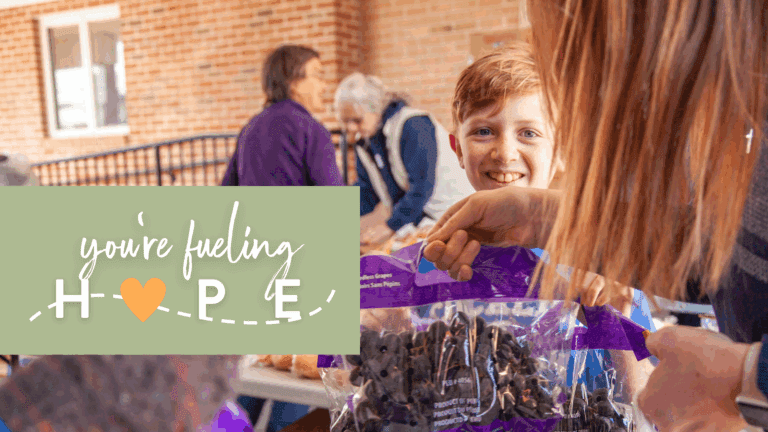
Food drives are a popular way to give back to the community and teach children the value of sharing what we have with those less fortunate. Particularly around the holiday season, supermarkets, schools, police departments, and offices around the country set up food drive boxes, encouraging customers, peers, and colleagues to donate canned food items to feed the hungry.
The outpouring of generosity makes a visual impact. Who doesn’t love to see stacks of canned goods ready to feed hungry families?
Yet the results of a typical food drive may not have the impact you’d expect.
In an NPR interview, Katherina Rosqueta, executive director of the University of Pennsylvania’s Center for High Impact Philanthropy claims, “As much as half of that food may never be used and millions [still] go hungry.”
While food drives seem like a great idea to support the local community, cash donations often make the most impact. Here are five reasons you should consider canning the food drive this year, in favor of monetary donations to your local food bank.
1. Food Banks Can Purchase Food at a Much Lower Cost
The average consumer spends four to five times more buying canned goods at retail prices. That means for every dollar you spend, a typical food bank could buy $4 to $5 worth of food.
In addition, many large food manufacturers frequently donate their excess food to food banks, rather than sending it to waste disposal sites. This extends the reach of food banks far beyond what any single consumer could purchase at their local grocery store.
According to Rosqueta, “One of the things that we have available to us now in the United States, is actually a surplus of food. That surplus, when it gets donated to food banks, can then be made available to local pantries and soup kitchens around the country. And because these are either donated food or food that is purchased by the network of food banks at wholesale prices, the same $10 that you would spend to, say, get three cans of food, could actually buy retail value 20 times more food. And that can be the difference between just providing enough for lunch for a couple of people to actually feeding a family of four for a week.”
At Blessings of Hope, the average family box of food we distribute would cost $100 if all of the items were purchased separately at a local store. We’re able to provide these food boxes at a cost of just $6, making excellent use of the funds we receive from generous donors.
2. Sorting Canned Food Takes Time
Canned goods are extremely heavy and time-consuming to inspect, sort, and categorize. This puts tremendous strain on volunteers at food banks, who must spend time sorting through canned goods, rather than packaging food or participating in outreach events.
There’s also no guarantee that the donations will provide food that meets the needs of families. While many food banks offer guidelines on the best items to give, random boxes of donations often contain a cornucopia of items including pie filling, cans of pumpkin, beans, or creamed corn that may or may not complement the food bank’s current inventory. Surplus or unhelpful items often go to waste, draining time and resources in the process.
Monetary donations, on the other hand, can be allocated to fill current needs right away, without additional burdens on staff. This makes it much more likely that your cash donation will actually benefit a family in need.
3. People Need More Than Canned Food for a Complete Diet
While canned food can provide many staples, hungry families need more than cans of vegetables, beans, and tuna for a balanced diet. That’s why many food banks provide fresh vegetables, meat, bread, milk, and much more.
In a recent article on Slate, Greg Bloom, a development assistant for Bread for the City in Washington D.C., explains, “we find that almost half of what comes to us in any given food drive just doesn’t meet our nutritional standards.” The article goes on to point out that high-sodium soups can be a problem for those with high blood pressure. Donated nuts can end up going to families with allergic kids.
The bottom line is that individual food banks and soup kitchens understand the people they serve much better than those participating in food drives. Donating money to the cause allows food banks to buy the items that will best serve their communities.
4. Food Banks Have Overhead Costs
While much of the work at many food banks is performed by volunteers, every food bank has overhead costs. These costs include expenses to maintain their facility from heating and cooling the building and keeping the lights on to handling administrative functions from accounting to customer service. Many food banks also maintain their own fleet of delivery trucks, which require fuel, maintenance, and upkeep. All of these things require money.
While most of us don’t want to think about our donations going towards administrative costs, these costs are necessary in order for any food bank to continue their mission.
Thanks to the generosity of over 1,900 registered volunteers, Blessings of Hope’s administrative and fundraising costs make up only 8% of our operating budget. It’s a small, but very necessary part of our budget that makes it possible for us to do the work we do each and every day.
5. Monetary Donations are Easier to Document for Tax Purposes
Perhaps one of the best reasons to ditch canned donations for cash is the ease in reporting your donation on your yearly tax return. While you can keep receipts for canned food that you donate, it’s harder to provide proof of your donation and requires more work. On the other hand, a cancelled check or line item on your credit card statement to a specific charity provides concrete proof of your donation, should you ever be audited.
So the next time you see a food donation box at your local supermarket, church, or school, we hope you’ll find out more about the charity it’s designed to help and write a check directly to the organization instead. If you’re feeling extra ambitious, or want to organize a fundraiser in your local area, consider soliciting monetary donations via a charity auction, or selling crafts or event tickets, where a portion of the proceeds is donated directly to a local food bank or soup kitchen. By eliminating inefficiencies and taking advantage of the buying power of food banks, your monetary donation can have a much greater impact.
Based in Lancaster County, PA, Blessings of Hope is a food distribution warehouse here to empower ministries, organizations, and individuals to reach the less fortunate through food and acts of loving kindness. With the help of over 1,900 volunteers, and partnerships with 150 ministries, we currently distribute approximately 25,000 meals per day throughout the Northeast United States. Find out how you can help us continue to spread the gift of hope in our community.





